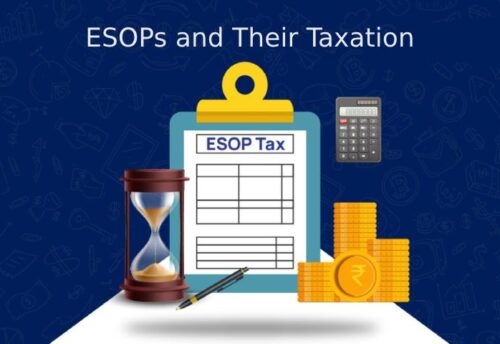
- 15/02/2025
- MyFinanceGyan
- 103 Views
- 5 Likes
- Finance, Investment
Why Typical Goal-Based Financial Planning Falls Short for Your Retirement
Picture this: it’s a peaceful weekend morning, and you’re sharing a cup of tea or coffee with your life partner. The conversation drifts from reminiscing about your parents’ retirement lifestyles to your current way of living. Naturally, it leads to discussions about your long-term financial plans and the kind of life you envision post-retirement.
You both decide to draft a goal-based financial plan to cover all major life milestones, including retirement. You plan to retire at 60 and estimate that you’ll need around ₹6 crores over the next 30 years to maintain a comfortable lifestyle. After crunching the numbers, you conclude that investing ₹17,000 monthly in a financial instrument yielding 12% annual returns will help you reach your retirement goal.
With both your incomes, setting aside ₹17,000 monthly seems feasible, and you feel confident that you’ve cracked your retirement plan. But hold on—have you considered the bigger picture?
Ask yourself these questions:
- Will you need the entire ₹6 crores at once upon retirement?
- What taxes will be applicable on your withdrawals?
- How will you invest this lump sum to ensure it generates enough passive income while lasting through your retirement years?
- Will the returns provide sufficient cash flow annually to sustain your lifestyle and support any dependents?
- What if unexpected expenses, such as critical illness treatments, deplete your corpus?
These considerations highlight that calculating your retirement corpus and the monthly investments required is just the starting point. There are several additional layers to effective retirement planning.
What is Goal-Based Financial Planning?
Goal-based financial planning is a popular approach where you map out a timeline of your financial goals and calculate the monthly investments needed to achieve them. You then allocate appropriate financial instruments based on the timeline and your risk tolerance.
While individual goals vary, common ones include purchasing a home, funding children’s education and marriage, and, of course, retirement. Generally, the further away a goal is, the more risk you can afford to take. For instance:
- If your child’s higher education is 15 years away, you might invest in equity mutual funds.
- If you plan to buy a home within a year, you might opt for fixed deposits or liquid debt funds.
A basic goal plan might look like this:
- Invest ₹20,000 monthly in equity mutual funds for 15 years to accumulate ₹1 crore for your child’s education, assuming a 12% annual return.
- Invest ₹57,000 monthly in recurring deposits for 12 months and park ₹40 lakhs in a 1-year fixed deposit at 7% annual returns to save ₹50 lakhs for a home down payment.
While goal-based planning helps achieve point-in-time financial targets, retirement planning requires a more comprehensive approach.
Retirement: The Longest Financial Phase of Your Life
Retirement isn’t just another financial goal—it’s an entirely new phase of life. It’s the time when you want to live life on your terms, free from financial stress. But achieving this requires more than just a lump sum corpus.
Key Factors to Consider for Retirement Planning:
- Ongoing Expenses Without Active Income:Even after retiring, expenses like home maintenance, property taxes, healthcare, leisure activities, household necessities, and support for family members will continue.
- Unforeseen Expenses:Medical emergencies or other unexpected costs can significantly impact your savings. Comprehensive health insurance becomes crucial.
- Inflation:Inflation erodes purchasing power over time, so your investment strategy must account for lifestyle inflation and ensure that your passive income grows accordingly.
- Generating Sustainable Passive Income:Your assets must produce enough income to cover expenses, and that income should adjust for inflation.
Retirement planning isn’t a one-time task. It requires continuous attention and a holistic approach, including:
- Emergency Planning:To cushion against unexpected expenses.
- Cash Flow Planning:To ensure your passive income sufficiently covers your lifestyle needs.
- Tax Planning :To minimize income and capital gains taxes.
- Investment Planning:To maintain a diversified portfolio balancing growth and stability.
Which Financial Products Are Best for Retirement Planning?
Given the widespread impact of retirement, governments have introduced specific financial products with favorable tax treatments to encourage long-term savings.
In India, popular options include:
- National Pension System (NPS)
- Employee Provident Fund (EPF)
- Public Provident Fund (PPF)
- Atal Pension Yojana (APY)
- Pension plans from insurance companies
- Senior Citizens Saving Scheme (SCSS)
While most of these products offer conservative, debt-like returns, NPS stands out due to its diversified exposure to equity, debt, and alternative assets. It also offers flexibility in withdrawing a portion of the corpus and creating regular income streams post-retirement.
NPS Benefits Include:
- Consistent savings with tax benefits until retirement.
- The option to withdraw up to 60% of the corpus tax-free after retirement (between ages 60 and 75) in periodic intervals.
- Purchasing an annuity with the remaining corpus to receive regular payments, taxed as per your applicable tax slab.
Final Thoughts:
Goal-based financial planning is a great starting point, but it’s not sufficient for retirement. Estimating your retirement corpus provides a helpful benchmark, but simply setting up SIPs to reach that target isn’t enough.
No single product, including NPS, can fully address your retirement needs. While NPS offers a comprehensive framework, it falls short of covering all aspects of retirement planning, such as health emergencies, tax implications, inflation adjustments, and ensuring the longevity of your financial portfolio.
Think of NPS as a springboard, not the finish line. To ensure a fulfilling, stress-free retirement without compromises, consider seeking guidance from a qualified financial advisor.
Disclaimer: The views expressed in this article are personal and intended for educational purposes. They do not constitute product recommendations.



